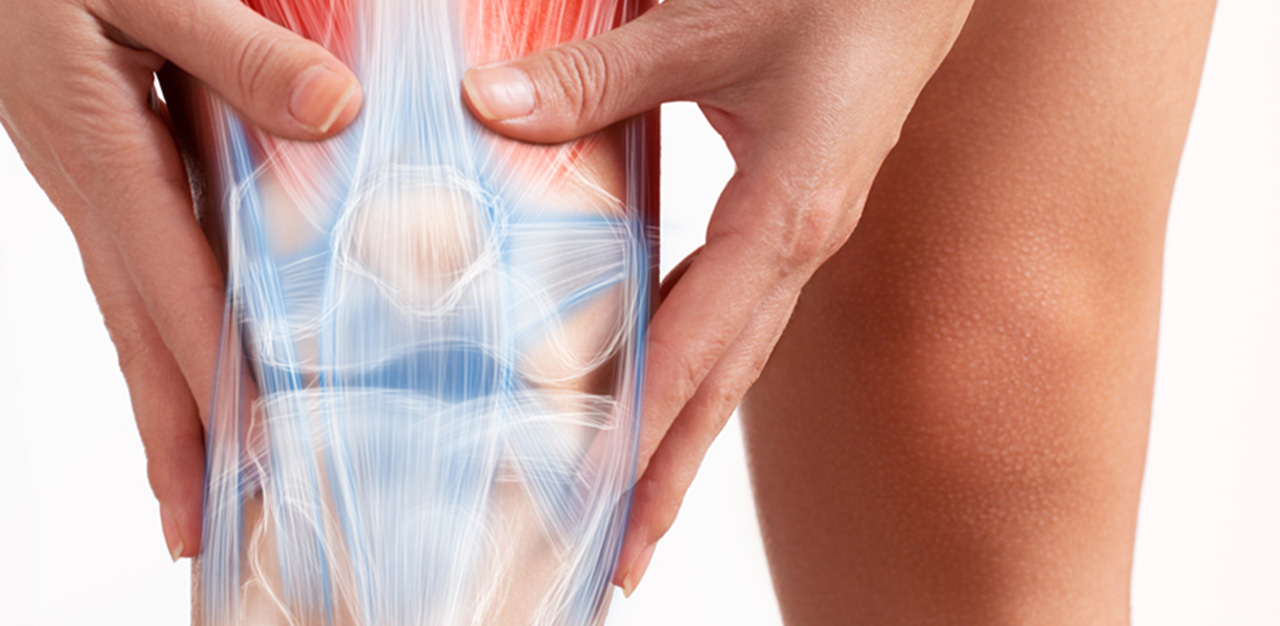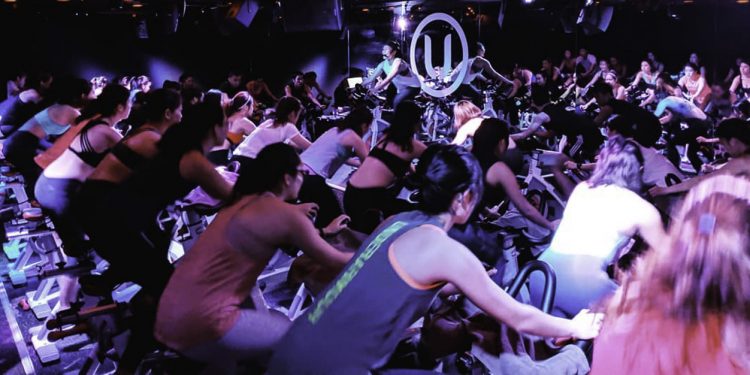A form of indoor cycling known as spinning continues to be one of the most popular cardio workouts in many parts of the world, including Singapore. But recent media reports of spin class-induced injuries that resulted in rhabdomyolysis, a potentially fatal breakdown of damaged muscles, has taken the wind out of enthusiasts of this intense exercise. It also raises questions about the safety of spinning and how easy it is to overdo this exercise. TheHomeGround Asia asks some experts what can be done to avoid injury in the quest to get fit.
Pedaling fast and furious, the spin class participants are in the zone, driven by high-tempo music in the background. The instructor’s voice rises above the pumping beat, motivating rows of sweating students with words of encouragement throughout the workout.
Welcome to the world of spinning, where a session of 45 to 60 minutes of high-intensity stationary cycling supposedly builds endurance and strength, and burns calories by the bucket load. Having gained popularity over the years, many gyms and fitness studios now offer classes in it. And with this, has come greater scrutiny.
In recent years, international media and academia have put the spotlight on the discipline, while reports of post-workout health nightmares and research on how spinning can lead to rhabdomyolysis has gained momentum worldwide.

What is rhabdomyolysis?
Also referred to in short as ‘rhabdo’, it is the breakdown of damaged skeletal muscle, due to overexertion during exercise, which releases myoglobin (iron- and oxygen-binding protein) into the bloodstream. Leaking too much of this protein, which stores oxygen in your muscles, into the bloodstream can result in kidney damage and, if left untreated, failure of these vital organs. The initial symptoms of rhabdomyolysis might be subtle, but can include muscle weakness, fatigue, bruising, nausea and soreness.
From pedal to hospital
The connection between spinning and rhabdomyolysis made the headlines here when two women in Singapore were admitted to hospital for rhabdomyolysis in February. Both had attended their respective first spin class just days before they were hospitalised. Last month, another spin class participant shared a similar experience on social media, explaining how she had faced renal failure and had to be hospitalised.
These reported cases of rhabdo do not surprise part-time spinning instructor Mark Leong, who has been doing the workout for more than two years. He started teaching in a gym in the Central Business District this year.
“The increase in providers is what we can attribute the publicity to, and not the workout itself,” says the 31-year-old. “Because spin studios have been popping up everywhere recently, many [customers] are interested to find out what spin is all about, yet they may be unprepared for the high-intensity workout.”
Renal medical specialist Angeline Goh has also observed the connection between rhabdomyolysis and spinning. With more than two decades of medical experience, Dr Goh has dealt with several cases in her career. She has seen how the leading cause of this muscular injury has shifted from accidents to fitness workouts in the mid-2010s.
She explains, “Physical causes of rhabdomyolysis used to be observed more frequently in patients who have sustained crush injuries, but we are increasingly seeing more cases of rhabdomyolysis from (over-)intense exercise.”

Spinning’s double-edged sword
For fitness enthusiast Shirley Soon, the benefits of getting a healthy high from such a workout has seen her commit to regular spin classes, since her first session in December last year.
“When used correctly, it pushes you to improve tremendously and progress in strength, cardiovascular fitness and stamina,” says the 29-year-old marketing executive. “Many times, the push (music, instructor, group setting) allows you to achieve where you didn’t think your body could. The collective atmosphere can be very contagious.”
Mr Leong believes the fitness warriors who come for such classes seek to maximise the time they have inside the studio.
“Be it the people beside them nailing every move, or staying on the beat, or even because they paid a lump sum of money to be in that class – they definitely want to make the most out of the experience,” he says. “After all, that’s what they come to class to do; to work out, to have fun, and to walk home feeling healthy and fulfilled.”
Busking in the high-adrenaline rush of spinning workouts has its dangers; participants might inadvertently over-exert themselves.
“With spinning, it is common because you can ‘get carried away’ from the motion of the cycling, [compared to] body-weights workouts where you stop when you cannot endure anymore,” Ms Soon adds. “On the flipside, when you don’t listen to your body, don’t know your limit, push more than you can handle, you end up hurting yourself.”

Spinning isn’t the only cause of rhabdo
While Mr Leong and Dr Goh acknowledge that spinning is the leading activity behind the increase of exercise-induced rhabdomyolysis, they note that other high-intensity fitness workouts could also lead to the muscular injury.
“Rhabdo can similarly occur in a HIIT (high-intensity interval training) class, or a Crossfit training session,” says Mr Leong. “It really depends on the individual’s fitness level, the amount of progressive training they undertake and whether they push themselves too much over their own limits.”
Dr Goh points out how excessive weightlifting, a secondary leading cause for exercise-induced rhabdomyolysis, can cause muscle injury too. She explains that it is more common for people to overwork their lower limbs from spinning than from lifting the upper limbs.
She says, “For weight lifting, many of these patients had signed up for personal training sessions in gyms and were usually asked by their personal trainer to lift weights as part of the workout.
“The baseline physical fitness of users against the trainer needs to be put into consideration… What the physical trainer can do compared to what the gym user can achieve physically before reaching their limit, may be different.”
Safety matters for beginners
Local spinning gyms offer different introduction schemes for first-timers, so that they understand what they are getting into before engaging in the session.
Ms Soon recalls what she encountered in the pre-workout briefing before her first spinning class and in subsequent classes: “I was told to report earlier in my first session and the instructor went through with me the safety instructions, such as set up and emergency brake.”
She adds, “In every class, they will also go through safety instructions, much like what happens before taking a flight, and many will always tell you to take it easy, sit in the saddle if you can’t [keep up], listen to your body, or give you options for different levels of difficulty.”
Beginners too must play their part to ensure that their spinning sessions are fun and safe, says Mr Leong: “Where we do our best in teaching beginners and first-timers the proper form, technique and the must-dos, it is also up to the riders to apply what we say to prevent overexertion.”
He warns against being too gung-ho in the first session, “Beginners are especially very enthusiastic about trying out a new form of workout, but they have to be careful not to be too obsessed with the environment, music, and hype of the class that they forget their body limit.”
Hydration saves your life
Drinking lots of fluids during spinning workouts could make the difference between a quick recovery or kidney dialysis caused by rhabdomyolysis.
Dr Goh explains, “In rhabdomyolysis, or breakdown of muscle tissue, the muscle cells release myoglobin into the bloodstream, and this molecule can precipitate in the kidney, causing tubular obstruction and acute kidney injury.
“The kidney is made up of many tubules, whose function is to reabsorb or release fluids and electrolytes at different points to maintain balance in the human body. When they get blocked by myoglobin, they cannot function normally, resulting in tubular injury or acute kidney injury.
“In mild cases, with good hydration, the myoglobin can be flushed out. In severe cases, where there is so much obstruction in the tubules, hydration may be insufficient to prevent acute kidney injury. The patient may require temporary dialysis to correct fluid and electrolyte disorders, till the kidney recovers.”
She adds that even in the worst cases recovery from exercise-induced rhabdomyolysis takes up to a couple of weeks.

Choosing to play safe or be the hero
Everyone TheHomeGround Asia interviewed agrees that individual health ownership is the only way to reduce the occurrence of rhabdomyolysis after working out. They advise the public to listen to their own bodies and be aware of their own limits, instead of being swept up by the high-energy environment.
Ms Soon says, “The recent reports teach us to be more cautious and practise progressive conditioning in any form of exercise.”
While Dr Goh urges, “The trainers should remind gym goers to rest when they are tired… When it comes to gym classes, especially spin classes, peer pressure may not be something good as users may not realise how fatigued or overworked their muscles are when their adrenaline is pumping.”
Instructors must also ensure that spinning is a safer activity. Says Mr Leong, “For instructors starting out, it is very important to know that you’re taking on the responsibility of a class full of riders and their well-being.”
He continues, “If you’re new [to spin], make sure you learn everything that you need to before you go all out. People embark on their fitness journeys for different reasons, but the important thing is that you stay on that course healthily, and safely.”
Join the conversations on THG’s Facebook and Instagram, and get the latest updates via Telegram.














